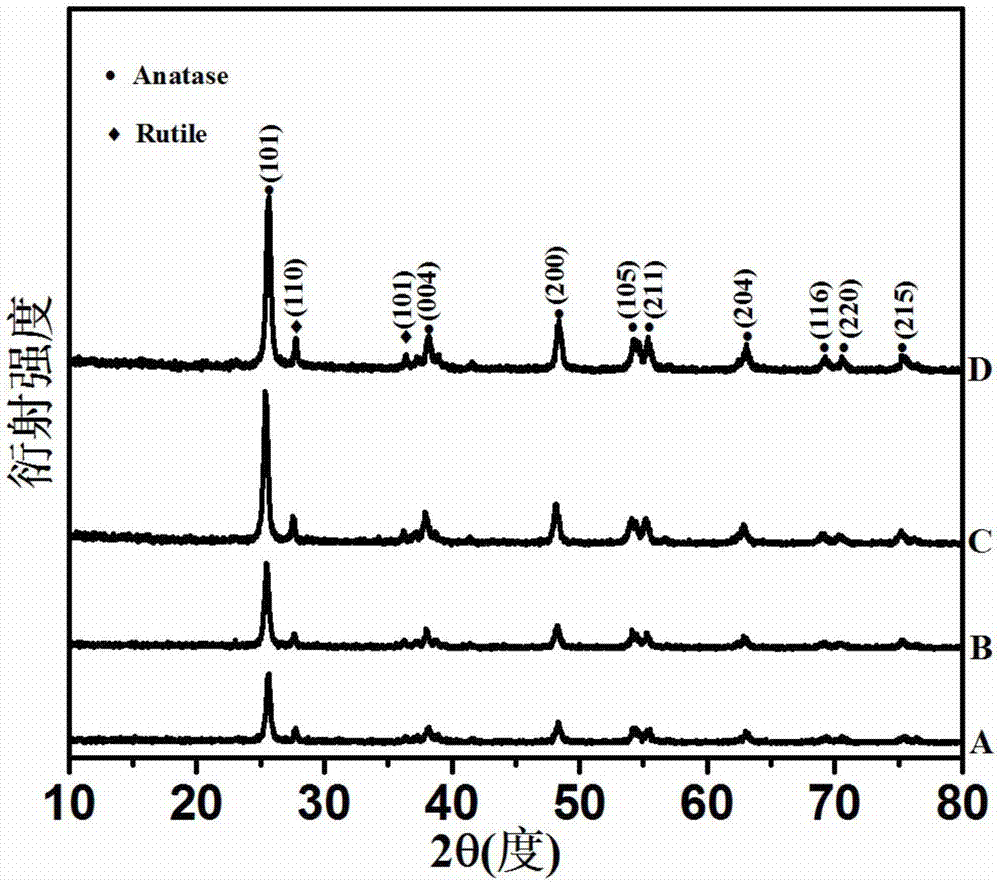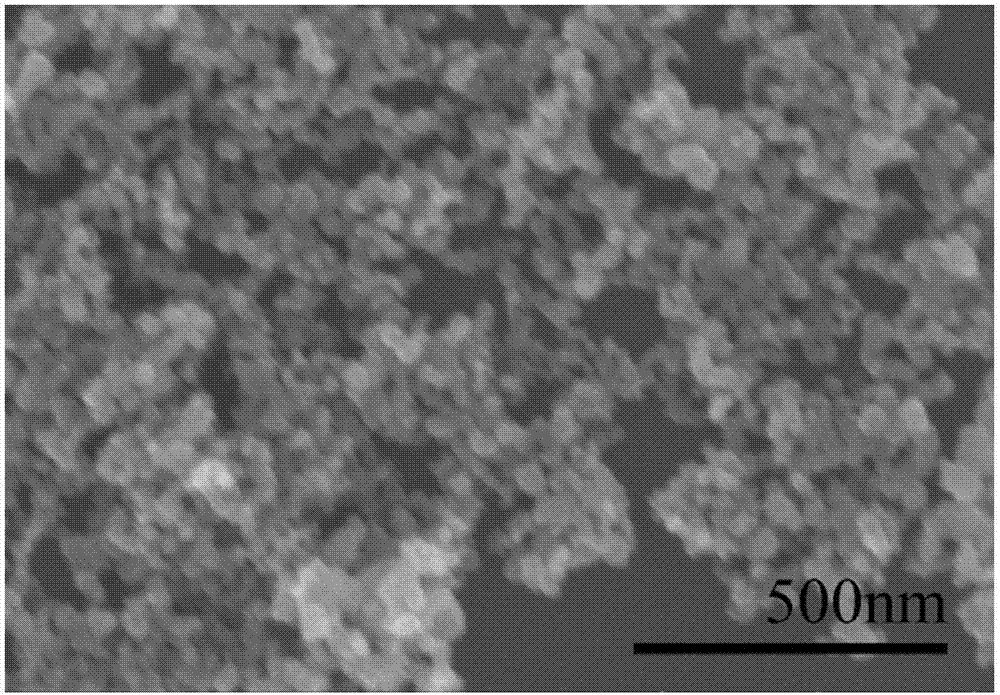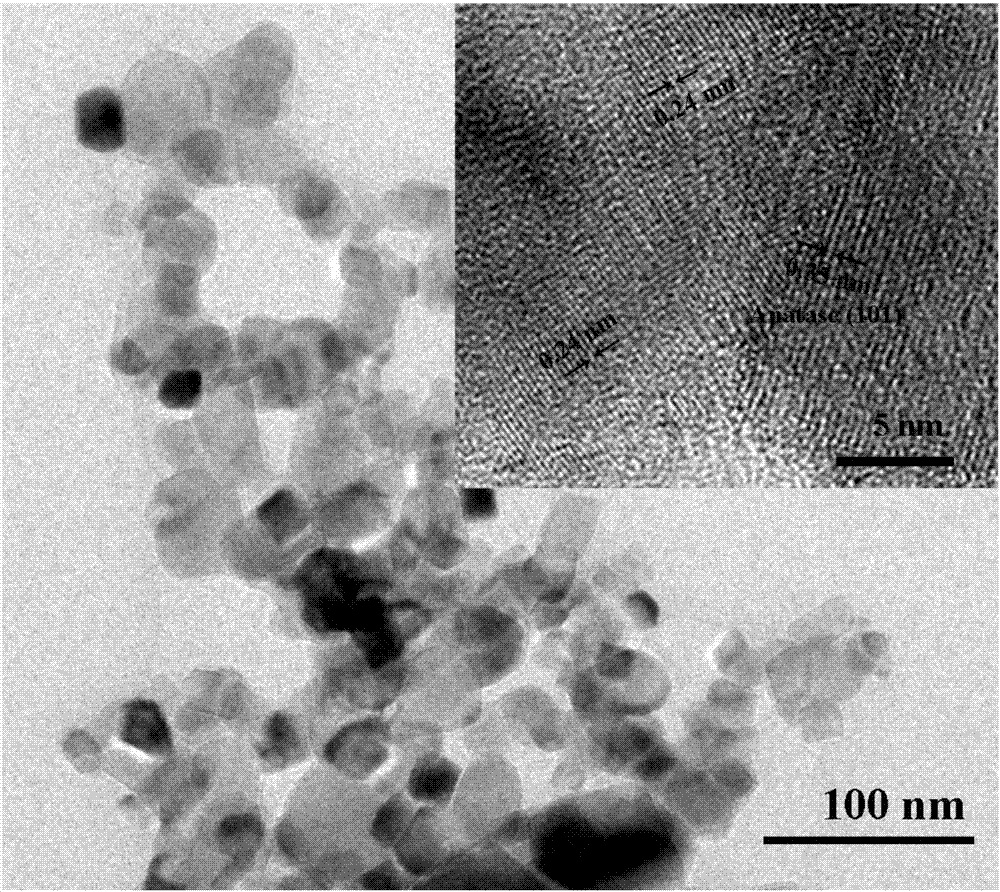One-step synthesis method of nitrogen-and-sulfur co-doped titanium dioxide/graphene quantum dot heterostructure
A technology of graphene quantum dots and titanium dioxide, applied in chemical instruments and methods, chemical/physical processes, water treatment of special compounds, etc., can solve the problems of multi-energy and consumption, and achieve the effect of small loss rate and favorable catalytic performance
- Summary
- Abstract
- Description
- Claims
- Application Information
AI Technical Summary
Problems solved by technology
Method used
Image
Examples
Embodiment 1
[0026] Preparation of nitrogen, sulfur co-doped titanium dioxide, nitrogen, sulfur co-doped graphene quantum dot composite material NSTG (2:1)
[0027] (1) According to the molar ratio of citric acid and thiourea being 2:1, weigh 0.42g of citric acid and 0.08g of thiourea.
[0028] (2) Add the powder weighed in step 1 into 8ml of dimethylformamide solution in sequence, and stir rapidly until it is completely dissolved.
[0029] (3) Weigh 100 mg of titanium dioxide (P25) powder, slowly add it into the solution obtained in step 2, and stir rapidly until it becomes a suspension.
[0030] (4) Transfer the suspension obtained in step 3 to a 40ml reaction kettle, and react at 180°C for 6 hours.
[0031] (5) Naturally cool to room temperature, remove the reaction kettle, and centrifuge the precipitate at 8500 rpm for 20 minutes to obtain a gray sample.
[0032] (6) The sample obtained in step 5 was washed twice with ethanol at 8500 rpm for 10 minutes, and the supernatant was discar...
Embodiment 2
[0038] In Example 1, change step 1 to: according to the molar ratio of citric acid and thiourea being 1:1, weigh 0.42 g of citric acid and 0.15 g of thiourea. The rest of the steps are consistent with Example 1. Finally, the sample NSTG (1:1) was prepared. The photocatalytic degradation dye performance test process is the same as step 9 of Example 1.
[0039] image 3 It is the TEM picture of the sample prepared in Example 2. Under low magnification, it can be seen that nitrogen-sulfur-doped titanium dioxide exists in the form of nanoparticles, and nitrogen-sulfur-doped graphene quantum dots are tightly attached due to the small size (about 5nm) On the titanium dioxide surface, a heterojunction is formed. At high resolution, the exposed (101) crystal plane of titanium dioxide can be clearly seen. Due to the effect of heterojunction, the (1120) crystal plane of nitrogen-sulfur-doped graphene quantum dots is closely connected, and the two crystal planes cooperate The effect ...
Embodiment 3
[0042]In Example 1, change step 1 to: according to the molar ratio of citric acid and thiourea being 1:3, weigh 0.42 g of citric acid and 0.46 g of thiourea. The rest of the steps are consistent with Example 1. Finally, the sample NSTG (1:3) was prepared. The photocatalytic degradation dye performance test process is the same as step 9 of Example 1.
[0043] Figure 4 It is the N 1s and S 2p high-resolution characterization of the sample prepared in Example 2. Under the high-resolution N 1s, 399.2, 399.7, 400.3, and 401.3 eV correspond to C-N-C, O-Ti-N, N-H, and Ti-O-N bonds, respectively. Under the high resolution of S 2p, 163.6, 164.7, 168.3, 169.6eV correspond to S 2p respectively 3 / 2 , S 2p 1 / 2 , S=O, S-O bonding, side proof, the sample prepared in Example 3 is a heterojunction of nitrogen-sulfur-doped titanium dioxide and nitrogen-sulfur-doped graphene quantum dots, and there is a strong chemical bond between the heterojunctions It is beneficial to improve the stabil...
PUM
 Login to View More
Login to View More Abstract
Description
Claims
Application Information
 Login to View More
Login to View More - R&D
- Intellectual Property
- Life Sciences
- Materials
- Tech Scout
- Unparalleled Data Quality
- Higher Quality Content
- 60% Fewer Hallucinations
Browse by: Latest US Patents, China's latest patents, Technical Efficacy Thesaurus, Application Domain, Technology Topic, Popular Technical Reports.
© 2025 PatSnap. All rights reserved.Legal|Privacy policy|Modern Slavery Act Transparency Statement|Sitemap|About US| Contact US: help@patsnap.com



